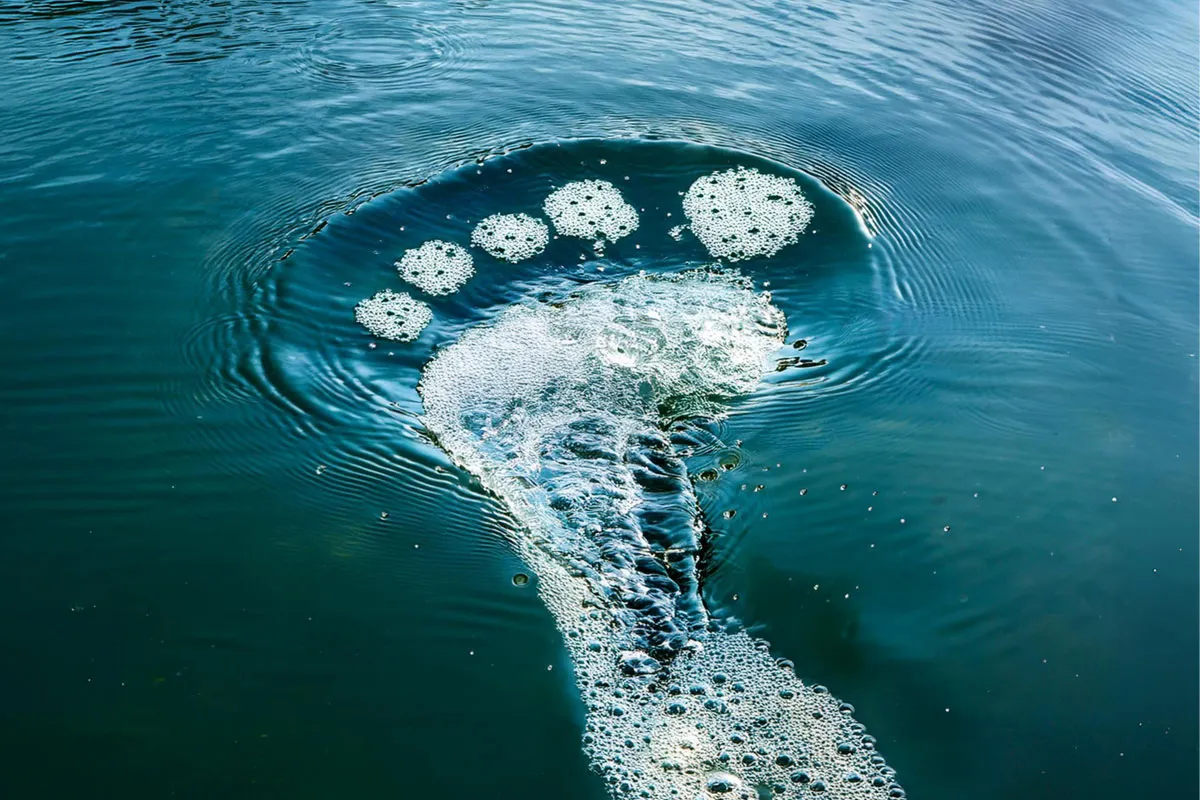
What is a Water Footprint and How Can We Reduce It?
In recent years, we have become increasingly aware that Earth's resources are not unlimited. Our daily choices and lifestyle have a significant impact on the environment. One of the key indicators for measuring this impact is the water footprint.
What is a Water Footprint?
A water footprint represents the total amount of freshwater that individuals, communities, or businesses consume directly and indirectly. This concept was introduced in 2002 by Dutch professor Arjen Y. Hoekstra from the University of Twente.
The water footprint reflects both direct and indirect water consumption throughout the entire production chain of products and services. It is important to understand that water is not only used when we turn on the tap but also in the production of clothing, food, and other goods.
Components of the Water Footprint
The water footprint consists of three key components:
- Blue water: Freshwater extracted from rivers, lakes, and groundwater used in industry, agriculture, and households.
- Green water: Rainwater absorbed by plants for growth, crucial for sustainable agriculture.
- Grey water: Polluted water generated during the production of goods and services. Reducing grey water is essential to minimizing water pollution.
Why is Reducing the Water Footprint Important?
Water is not an unlimited resource and is not equally accessible to everyone. By reducing our water footprint, each of us can contribute to the sustainable use of water. Measuring and understanding our impact encourages us to handle water more responsibly, helping protect the environment and preserve resources for future generationse.
How to Calculate Your Water Footprint?
Calculating your water footprint is now easy, thanks to various online tools, such as the calculator on the Water Footprint Network website. These tools help us identify where and how we can reduce our water consumption.
Ways to Reduce Water Consumption
There are many ways we can contribute to reducing water use:
- Smart Water Usage at Home:
Turn off taps while brushing your teeth, washing your hands, or shaving. Take shorter showers, use water-efficient faucets and showerheads, and fix leaking pipes. Reduce water consumption when washing dishes and laundry by running machines only when they are full. - Reusing and Collecting Water
Collect rainwater and condensation from air conditioners for watering plants or cleaning. Reuse wastewater from washing fruits, vegetables, or bathing to flush toilets or water plants. Collect cold water from the tap while waiting for it to heat up and use it for watering plants, cleaning, or flushing the toilet. - Efficient Watering and Garden Care
Water plants early in the morning or in the evening, use smart irrigation systems, and avoid unnecessary water runoff. This reduces evaporation and conserves water. - Responsible Behavior and Awareness
Choose energy-efficient appliances, wash your car with a bucket of water or visit car washes that recycle water, and encourage others to use water responsibly.
Technological Solutions for Water Conservation
Among the most important solutions for reducing household water consumption are modern technologies. Fluidmaster toilet flush valves optimize flushing and significantly reduce water consumption. Dual-flush systems allow users to choose the amount of water used based on their needs.
Conclusion
Reducing the water footprint is a shared responsibility. Through awareness and simple actions, we can make a significant contribution to preserving this valuable resource. By taking small steps, such as using water-saving appliances, making mindful consumption choices, and supporting sustainable practices, we can collectively create a better future for our planet.






